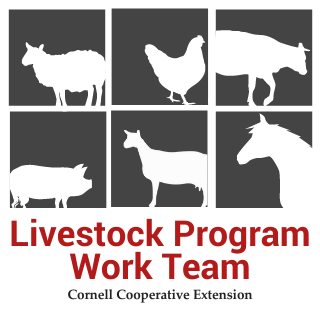Raising Pasture Finished Beef
Introduction
New York has an abundance of forage, where livestock can take advantage of hillsides and poor soils. With news media stories highlighting BSE and food born illness in our meat supply, more consumers are turning to local products including pasture finished, free roaming beef. Interest has also grown due to news reports promoting the benefits of conjugated linoleic acids (CLAs) in “grass fed” beef.
To date, there is not a USDA definition of “grass fed” or “pasture finished” beef. Production criteria come from the marketing organization that purchases the meat. As a general rule, pasture finished animals are not given any grain for the life of the animal and all antibiotics and additional hormones (implants) are banned.
Before a beef product can be labeled with terms that denote uniqueness or superiority of some kind the producer must file an “Animal Production Claim” with the Labeling Review Branch of the USDA. This involves submitting a label application, a prepared (manufactured) label including the claim in question, and an Operational Protocol (OP). An OP must be in the producer’s own words and must state in detail how the animals are raised, including ration formulations, sick animal protocol, herd health management, and other facts relating to the proposed claim (e.g. “no antibiotics,” “natural,” “grass finished”). For more information: www.usda.gov/agency/fsis
Managed intensive grazing is needed to achieve rates of gain that will produce a finished animal at 18-22 months of age. Harvested carcasses are often “aged” for as long as three weeks to improve tenderness.

